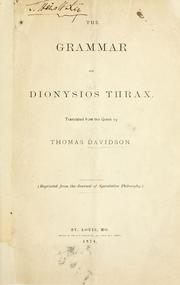In order to perform analysis one must have something to analyze — namely, a finished product, someone’s message, be it the message of another or one’s own. Grammatically speaking, analysis is a top down approach to understanding; it seeks to understand firstly the logic of the message and lastly the message’s detail. In fact, an important first step in understanding the logic of a message is often the elimination of its detail including prepositional phrases, adjective clauses, adjectives, and adverbs.

The key to understanding the logic of a message lies in one’s ability to recognize the clauses and the conjunctions and punctuation (written language only) that combine them. Whereas a clause is little more than a stand-alone thought with at least one subject-verb pair, either explicit or implicit — namely, omitted –, the conjunctions and punctuation that bind them together contain the logical relationships necessary to understand the complete thought. As subjects are often modified, or are even clauses in and of themselves, it is important that we learn to recognize not only the subject, subjects, or clause-subject of a clause or simple message, but also the subject phrase that elaborates the meaning of the subject contained within. In a similar, but different manner the verb or verbs that form the subject-verb pair or pairs of a single clause or simple message seldom appear in isolation. Accordingly, one must also learn to recognize the various ways in which verbs can be modified and know when and how to look for their objects.
Indeed, if only we can understand that the subject phrase of any simple message is the thing, person, activity, or idea about which we wish to speak or write, and that the verb phrase describes the action of the person or thing, or alternatively, the state or nature of the thing, person, activity or idea about which we wish to do the same, then we have already come a very long way in our understanding of how the English language, and not only the English language, is structured.
Our use of the verb be in the English language highlights the importance of this juxtaposition of subject and verb phrases in all that we say and write. For, everywhere that the state or nature of a thing, person, activity, or idea is described the verb be is either utilized or not utilized, but implied. Indeed, so useless can the verb be become that many languages simply omit this verb altogether. That we do not ignore its importance to the structure of the English language! For, not only does the verb be signal to the receiver of the message to look or listen for a description of the state or nature of the subject, but it also tells us when that state or quality of nature actually occurs.
The subject-verb pair or pairs of a simple message in English are not as apparent as they are in some languages, because gender is often completely ignored, and person and number across all persons seldom changes, but for a handful of frequently used verbs. Thus, the important changes in form that signal person, number, and gender are often missing in English, and to a neophyte language learner the form of a verb — especially in the simple present — is often indistinguishable from that of a noun, adverb, or some other part of speech. This said, it is generally easier to recognize verbs than it is other parts of speech, because verbs are often associated with other more easily recognized auxiliary (helping) verbs, as well as several patterned endings including -ing and -ed that are closely associated with verbs or at least their form.
Even conjunctions — a fairly small, self-contained group of words, are not always easy to discern. For, many can wear more than one grammatical hat and can be easily confused with other word forms with very different uses, such as adverbs, prepositions, and even prepositional phrases.
The bottom line in all of this is that, if students can discover the logic of the message, it is not necessary that they understand all of the words. Further, and perhaps more importantly, they will not attribute their own interpretation to the words that they do understand.
Finally, once the student has identified the major elements of a message and the conjunctions and punctuation that logically bind them, he is left with the task of formulating questions whose answers explain the logical relationships between each of the major elements. For, if he cannot, then it is likely that he does not understand the sender’s message.
